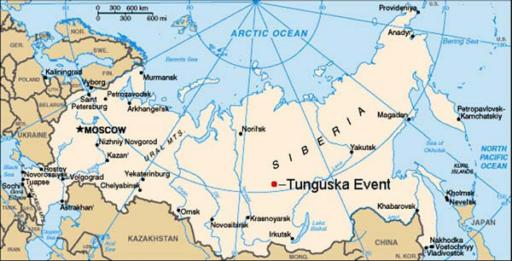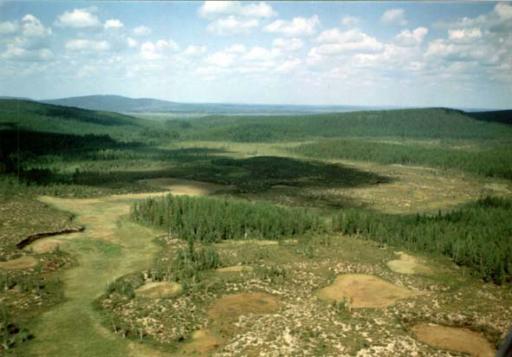|
|
A Space key to the riddle of the Tunguska catastrophe |
What is Tunguska? There is a region in Central Siberia, with several rivers having with this word in their names. It also stands as a short designation of one of the most enigmatic events that happened in the last century: the flight and explosion of a cosmic body of unknown nature. From the remaining material traces, instrumental records and eyewitness reports we know that in the morning of June 30, 1908, there occurred in this region a powerful high-altitude explosion. It happened over the so-called Southern swamp, a small morass not far from the Podkamennaya Tunguska river. The site's coordinates are 60° 53'N & 101° 54'E.
|
|  | | Russia, Siberia, Tunguska... |
| | Over an area of 200 square kilometers vegetation was burnt by the flash. The explosion devastated about 2,150 square kilometers of the taiga, an area twice as large as the territory of New York City, flattening some 30 million trees. If the Tunguska meteorite had fallen some five hours later then St-Petersburg would have found itself in the site of its explosion and the city would have been in ruins. But the settlement nearest to the place of explosion was the little trading station of Vanavara, some 70 kilometers away. |
| |
Some minutes before the explosion, local inhabitants saw a luminous body fly in the cloudless sky. It was seen at many settlements in the region, its flight being accompanied by thunderous sounds. Some years later, this body was designated as the Tunguska meteorite. Whether or not this was a meteorite in the strict sense of this word still remains unknown. It would therefore be more correct to call it the "Tunguska space body." (TSB).
The moment of the Tunguska explosion has been determined with an accuracy of 10 sec. It occurred at 0 h 13 min 35 sec (+ or -5 s) GMT (Pasechnik, 1986). The accuracy of determination of the altitude of the explosion is not so good, but it is generally agreed that it was in the range from 5 to 8 km. But as for the total energy released at Tunguska, here the discrepancy between various estimations reaches almost two orders of magnitude:
Scorer 1950: 90 megatons (Mt) of TNT
Martin 1966: ~50 Mt.
Posey & Pierce 1971: 50 Mt.
Pasechnik 1986: 30 to 50 Mt
Bronshten 1969: 30 Mt
Ben-Menachem 1975: 10 to 15 Mt.
Zolotov 1969: 10 Mt.
Levin & Bronshten 1985: 10 Mt
Korobeynikov et al. 1974: 9.5 Mt
Boslough & Crawford 2007: 3.6 Mt
|
|  | | The Southern swamp. Here explosed the Tunguska "meteorite." View from a helicopter. Photo V. Rubtsov |
| | | | |  |
|
| Contact: m e t r o n a x @ g m a i l . c o m | lundi 3 juin 2013 |
|
|
|

